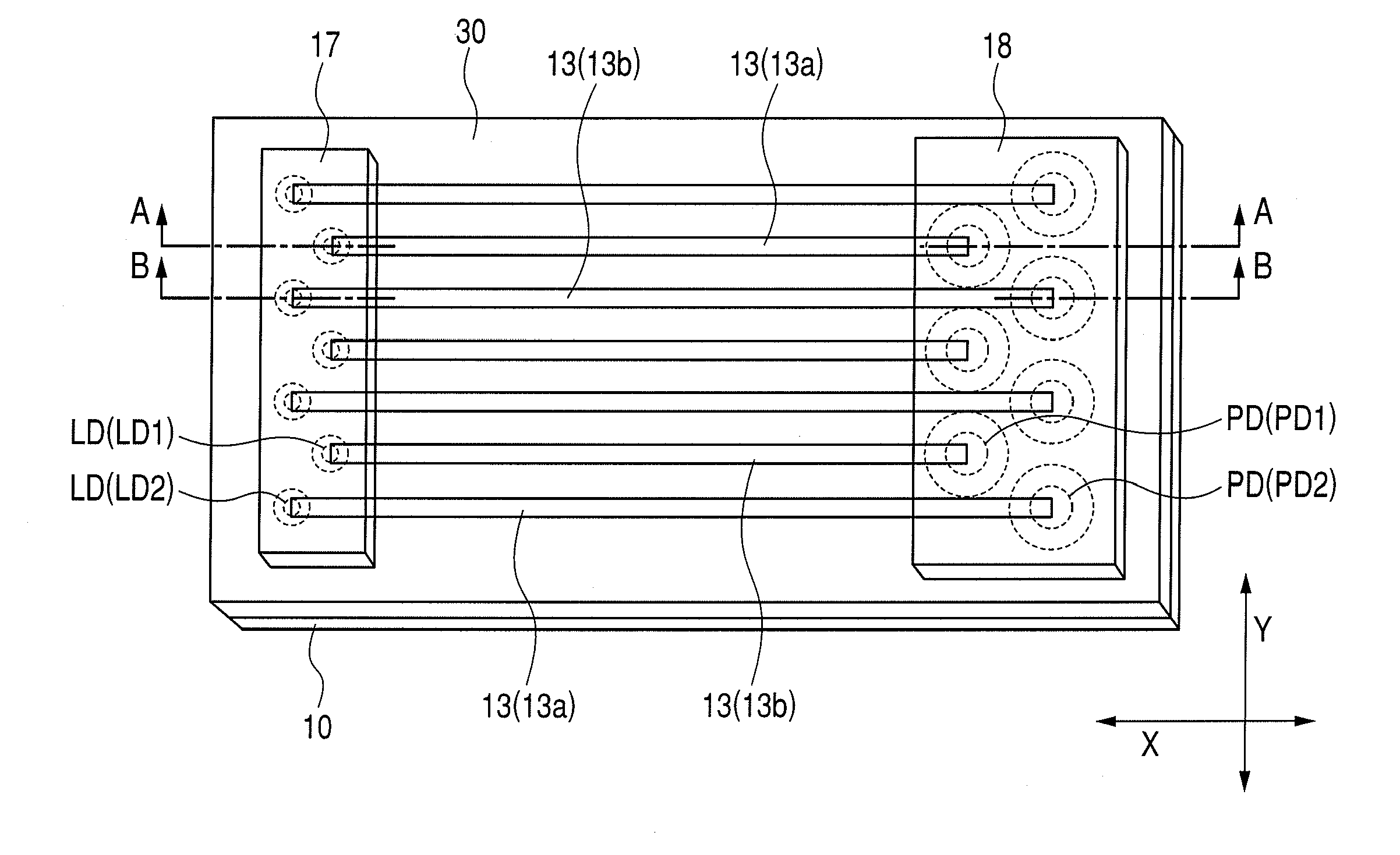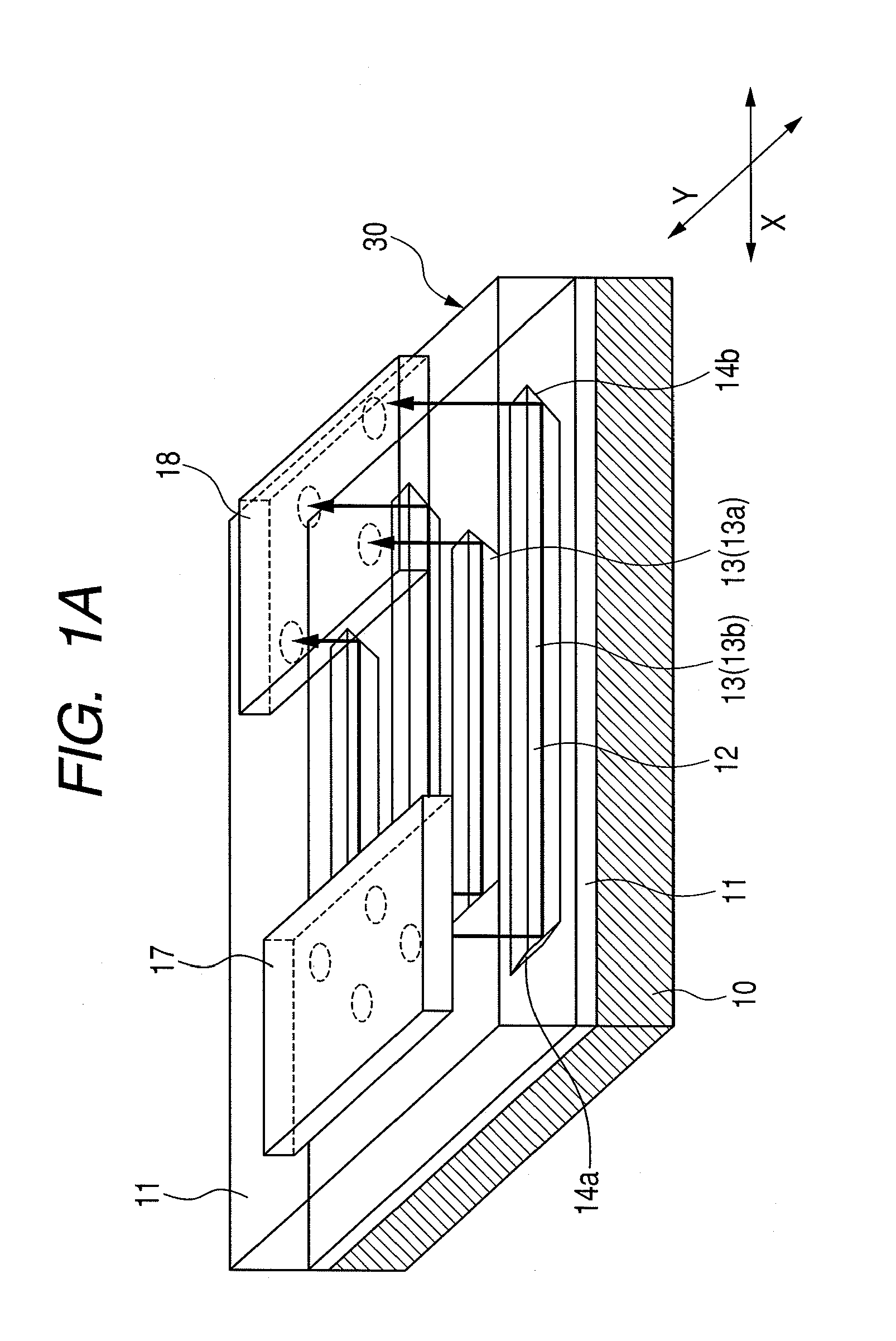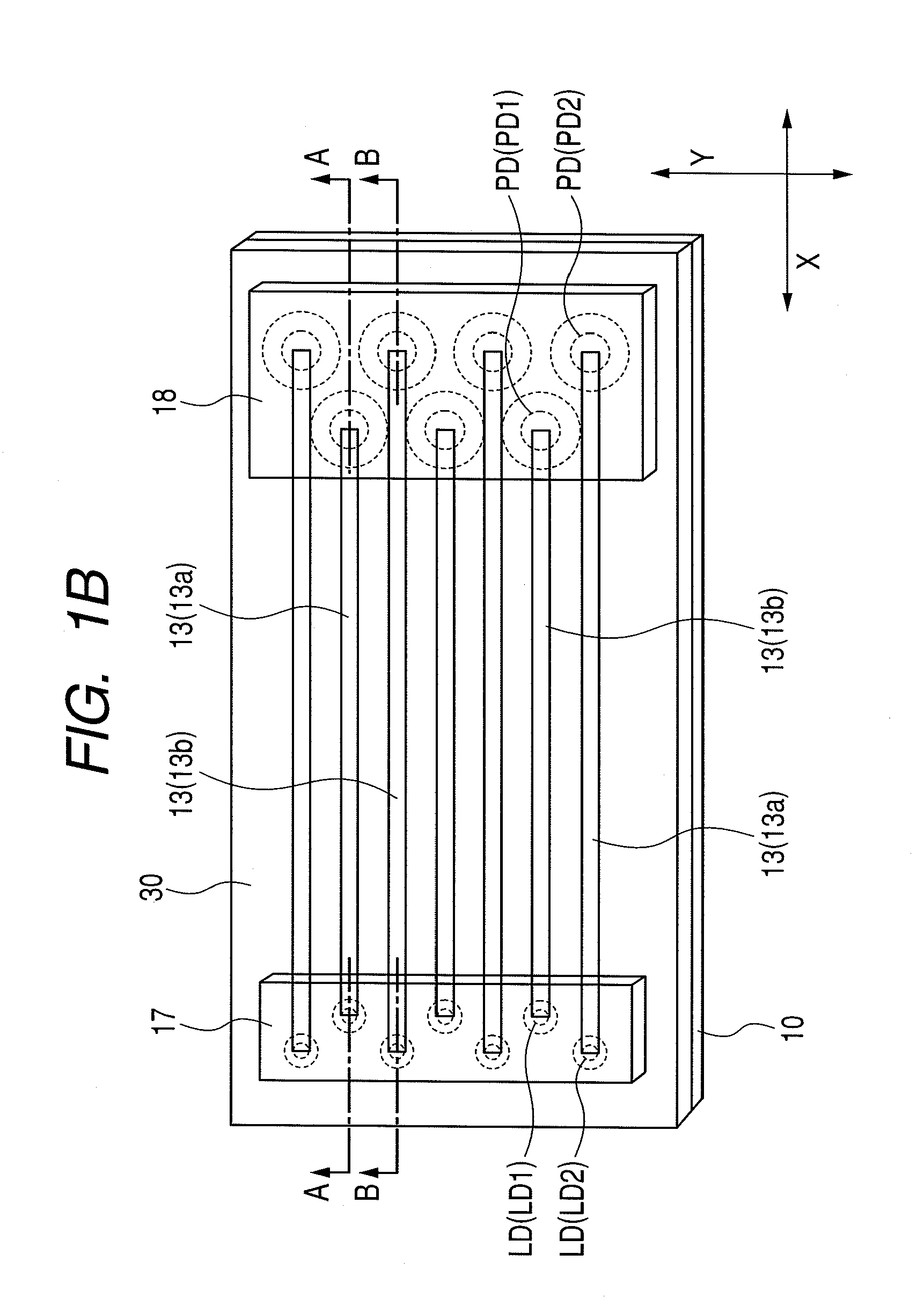Optical interconnection assembled circuit
a technology of assembled circuits and optical wirings, applied in the direction of optical elements, instruments, optical waveguide light guides, etc., can solve the problems of optical cross-talk, difficult to say that the two-dimensional layout is efficient, etc., and achieve the effect of high density disposition of optical wirings, reduced manufacturing processes, and high flexibility
- Summary
- Abstract
- Description
- Claims
- Application Information
AI Technical Summary
Benefits of technology
Problems solved by technology
Method used
Image
Examples
first embodiment
[0049]FIGS. 1A through 1D are drawings related to an optical interconnection assembled circuit in this first embodiment of the present invention.
[0050]FIG. 1A is a perspective view of the optical interconnection assembled circuit.
[0051]FIG. 1B is a flat (top) view of the optical interconnection assembled circuit.
[0052]FIG. 1C is a cross sectional view taken on line A-A of FIG. 1B.
[0053]FIG. 1D is a cross sectional view taken on line B-B of FIG. 1B.
[0054]As shown in FIGS. 1A through 1D, the optical interconnection assembled circuit in this first embodiment includes, for example, a laser diode array 17 and a photo diode array 18 assumed as optical element arrays, as well as an optical waveguide substrate 30 used for the optical connection between those optical element arrays (the laser diode array 17 and the photo diode array 18).
[0055]The optical waveguide substrate 30 includes a multi-channel optical waveguide array consisting of plural optical waveguides 13 on the same substrate. O...
second embodiment
[0095]FIG. 6 is a flat (top) view of an optical interconnection assembled circuit in this second embodiment of the present invention.
[0096]The optical interconnection assembled circuit in this second embodiment is basically the same in configuration with that in the first embodiment except for the following points.
[0097]In the first embodiment described above, as shown in FIGS. 1B through 1D, the optical waveguides 13a, as well as the optical waveguides 13b having a longer light path than that of the optical waveguides 13a respectively are disposed alternately and repetitively in the second direction (e.g., Y direction) and the laser diode LD1 in the first row (inside that in the second row) of the laser diode array 17 is connected optically to the photo diode PD1 in the first row (inside that in the second row) of the photo diode array 18 in the optical waveguide 13a of which light path is shorter than that of the optical waveguide 13b (inside—inside optical connection) while the l...
third embodiment
[0103]FIGS. 7A through 7C are drawings related to an optical interconnection assembled circuit in this third embodiment of the present invention.
[0104]FIG. 7A is a flat (top) view of the optical interconnection assembled circuit with respect to its schematic configuration.
[0105]FIG. 7B is a cross sectional view taken on line C-C of FIG. 7A.
[0106]FIG. 7C is a cross sectional view taken on line D-D of FIG. 7A.
[0107]The configuration of the optical interconnection assembled circuit in this third embodiment is basically the same as that in the first embodiment except for the following points.
[0108]In the first embodiment, the optical waveguide substrate 30 has a single layer optical waveguide array.
[0109]In this third embodiment, however, the optical waveguide substrate 30, as shown in FIGS. 7A through 7C, has a multilayer structure in which the optical waveguides 13a, as well as 13b that is longer than the optical waveguide 13a are formed in different layers. In this third embodiment, ...
PUM
 Login to View More
Login to View More Abstract
Description
Claims
Application Information
 Login to View More
Login to View More - R&D
- Intellectual Property
- Life Sciences
- Materials
- Tech Scout
- Unparalleled Data Quality
- Higher Quality Content
- 60% Fewer Hallucinations
Browse by: Latest US Patents, China's latest patents, Technical Efficacy Thesaurus, Application Domain, Technology Topic, Popular Technical Reports.
© 2025 PatSnap. All rights reserved.Legal|Privacy policy|Modern Slavery Act Transparency Statement|Sitemap|About US| Contact US: help@patsnap.com



